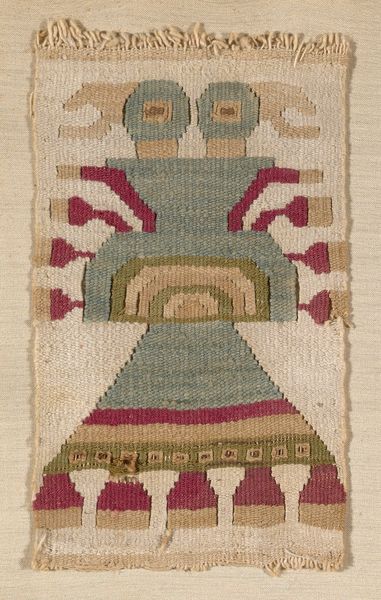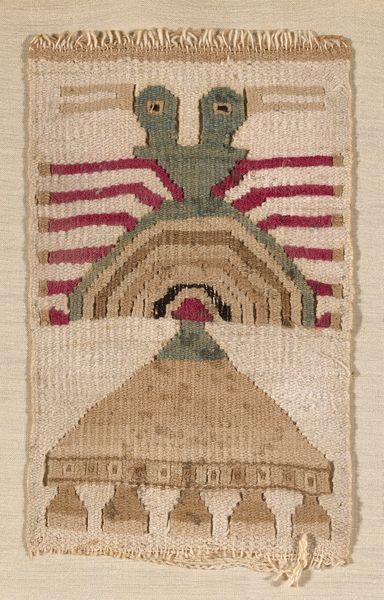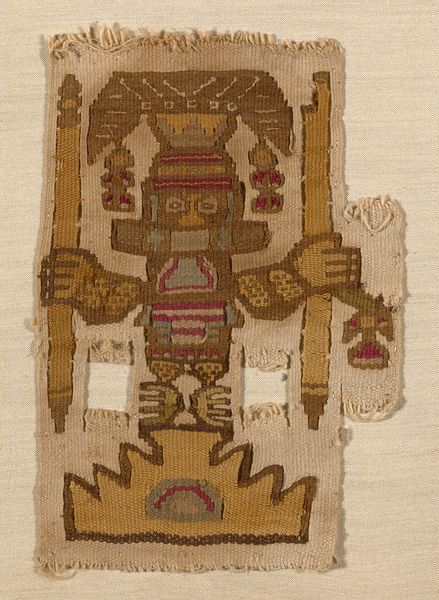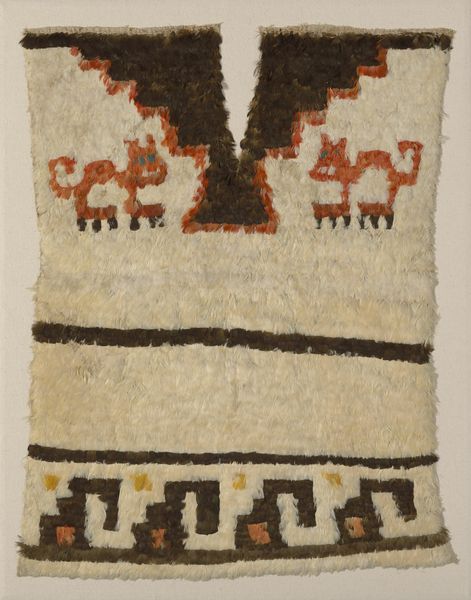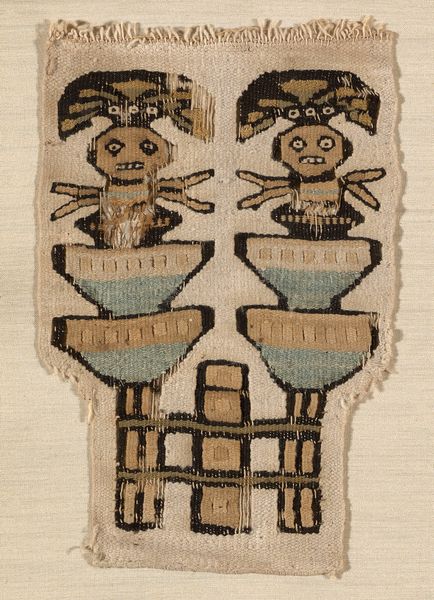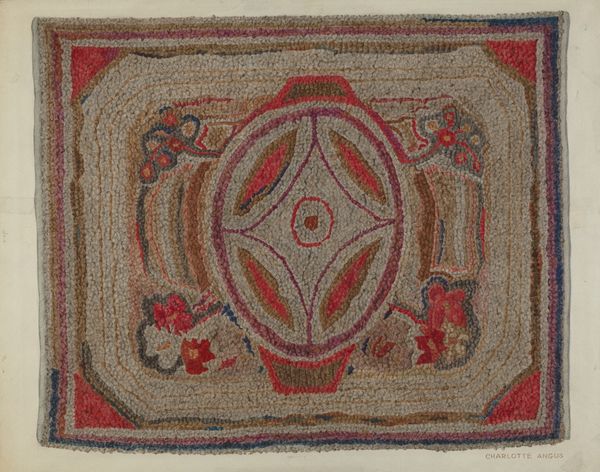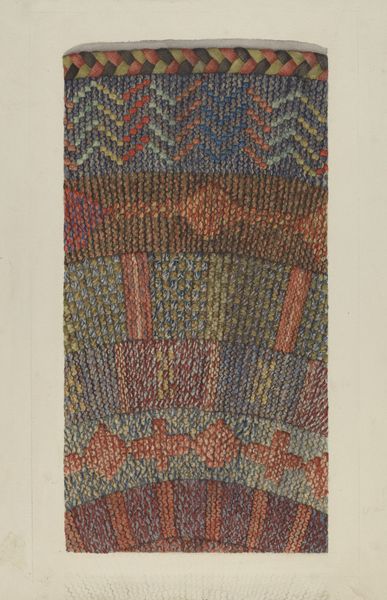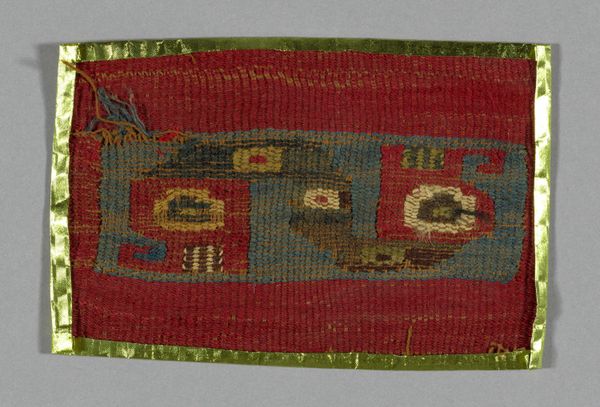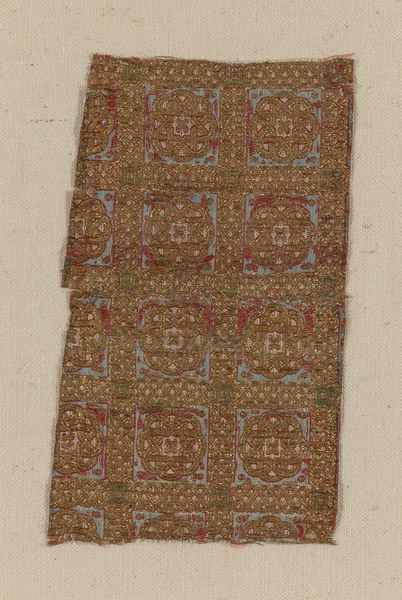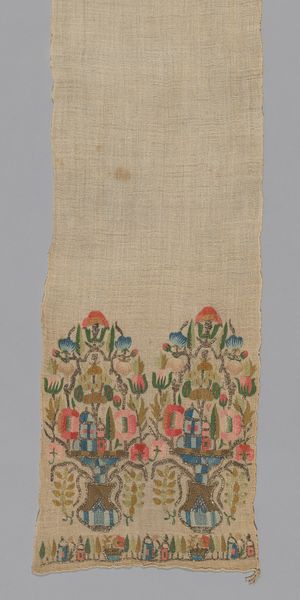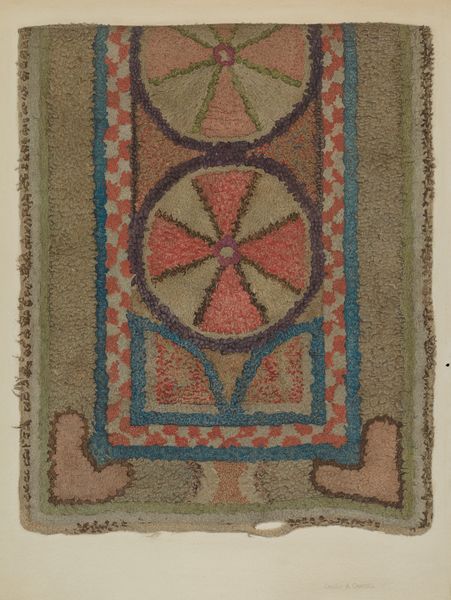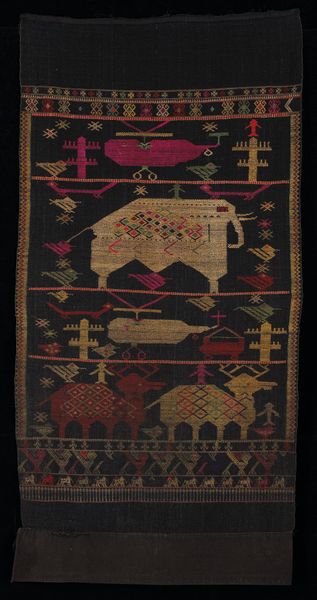
fibre-art, weaving, textile
#
fibre-art
#
weaving
#
textile
#
form
#
repetitive shape and pattern
#
geometric
#
indigenous-americas
Dimensions: 22.9 × 12.2 cm (9 × 4 3/4 in.)
Copyright: Public Domain
Curator: This intriguing textile is titled "Patch" and was created by the Lambayeque people sometime between 1000 and 1476. Editor: My immediate impression is one of controlled geometry, balanced yet slightly unsettling with that central motif—almost like an abstracted figure or deity. Curator: Absolutely. What we're seeing here is more than just design. The Lambayeque, flourishing in pre-Columbian Peru, wove narratives into their textiles. The repeated avian imagery—likely representing birds—carried potent cosmological symbolism tied to fertility, communication with the divine, and social status. These weren't merely decorative patterns. Editor: From a structuralist perspective, note the vertical composition. It's broken into distinct registers. Each with its own micro-patterning: horizontal lines above, geometric abstraction in the middle, and that band of 'legs' down below. The repetition is insistent; this weaving declares itself first as a structured object. Curator: Exactly, the very act of weaving was deeply embedded in the socio-political fabric of the Lambayeque society. Textiles functioned as conduits for cultural memory, transmitting crucial knowledge and reinforcing social hierarchies. The materials themselves would hold significance, revealing connections to trade networks and ecological understanding. Editor: Looking closer, I am interested by its collaged appearance and 'pieced' compositional nature. Are these separate sections later joined together? Also note, for instance, how that lower section departs formally, its register a shift from more open and simplified to dense and textured. It disrupts an otherwise calm visual field, piquing my curiosity. Curator: What you're noting are purposeful stylistic variations. The shift signifies symbolic nuance; certain sections intended to be ‘read’ differently, perhaps marking transitions within the narrative encoded in the weave. These "Patches" would communicate distinct meanings for their original viewers. Editor: Its very structure is itself a mode of meaning. This seemingly simple, albeit lovely, configuration becomes complex the more you unpack the formal decisions. Curator: Precisely. This textile encourages us to look beyond its immediate aesthetic appeal and contemplate the worldview of its creators. Editor: I agree; focusing on those decisions allows us insight into ancient visual problem-solving. Curator: Considering both the aesthetic and the cultural context truly deepens our understanding.
Comments
No comments
Be the first to comment and join the conversation on the ultimate creative platform.
